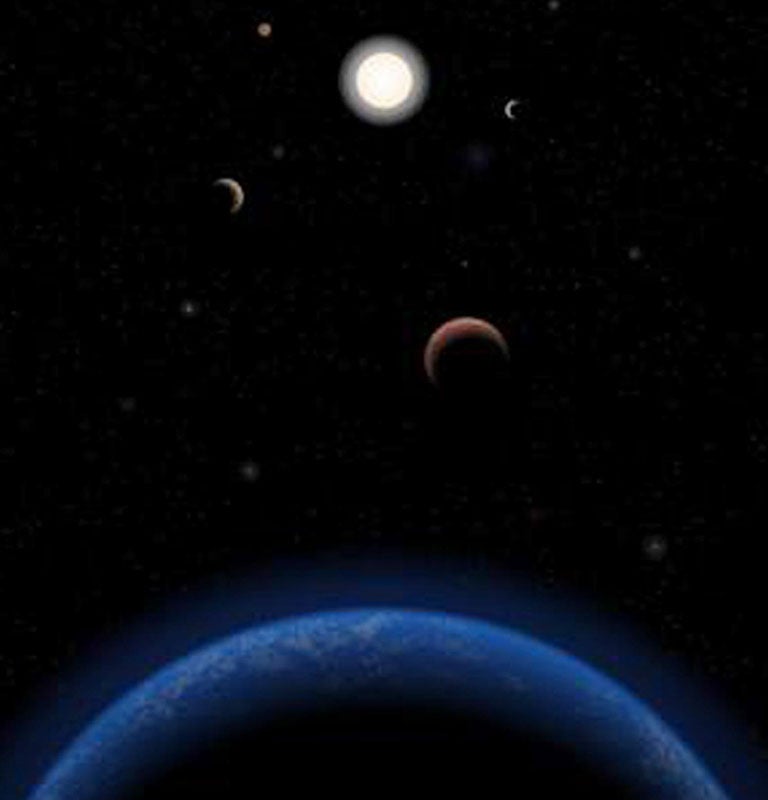Your support helps us to tell the story
From reproductive rights to climate change to Big Tech, The Independent is on the ground when the story is developing. Whether it's investigating the financials of Elon Musk's pro-Trump PAC or producing our latest documentary, 'The A Word', which shines a light on the American women fighting for reproductive rights, we know how important it is to parse out the facts from the messaging.
At such a critical moment in US history, we need reporters on the ground. Your donation allows us to keep sending journalists to speak to both sides of the story.
The Independent is trusted by Americans across the entire political spectrum. And unlike many other quality news outlets, we choose not to lock Americans out of our reporting and analysis with paywalls. We believe quality journalism should be available to everyone, paid for by those who can afford it.
Your support makes all the difference.Scientists have discovered a ‘habitable’ planet that orbits a sun visible to the naked eye.
The world is just 12 light years away, is between two and six times bigger than the earth, and is thought to be circling Tau Ceti, a star almost identical to our sun.
The planet is one of five orbiting Tau Ceti, and lies within the star's habitable zone. It is thought to have five times the Earth's mass.
Also known as the “Goldilocks zone”, the habitable zone is the orbital region that is neither too hot nor too cold to allow liquid surface water and, potentially, life.
Details of the discovery are to appear in the journal Astronomy & Astrophysics.
Because of the difficulties involved in detecting extra-solar planets, most found so far have had high masses.
The Tau Ceti planetary family is thought to be the lowest mass solar system yet detected.
Scientists found the planets using a highly sensitive technique that combined data from more than 6,000 observations from three different telescopes.
They used the radial velocity method which looks for “wobble” in a star's movement caused by the gravitational tug of planets.
Dr James Jenkins, a member of the international team from the University of Hertfordshire, said: “Tau Ceti is one of our nearest cosmic neighbours and so bright that we may be able to study the atmospheres of these planets in the not-too-distant future.
”Planetary systems found around nearby stars close to our sun indicate that these systems are common in our Milky Way galaxy.“
More than 800 planets have been discovered orbiting stars beyond the sun since the 1990s.
Those found around the nearest sun-like stars are the most interesting to astronomers.
Professor Steve Vogt, another team member from the University of California at Santa Cruz, said: ”This discovery is in keeping with our emerging view that virtually every star has planets, and that the galaxy must have many such potentially habitable Earth-sized planets. They are everywhere, even right next door.“
Professor Chris Tinney, an Australian member from the University of New South Wales, said: ”As we stare at the night sky, it is worth contemplating that there may well be more planets out there than there are stars, some fraction of which may well be habitable.“
Dr Jenkins is a visiting fellow at the University of Hertfordshire who is based at the University of Chile.

Join our commenting forum
Join thought-provoking conversations, follow other Independent readers and see their replies
Comments